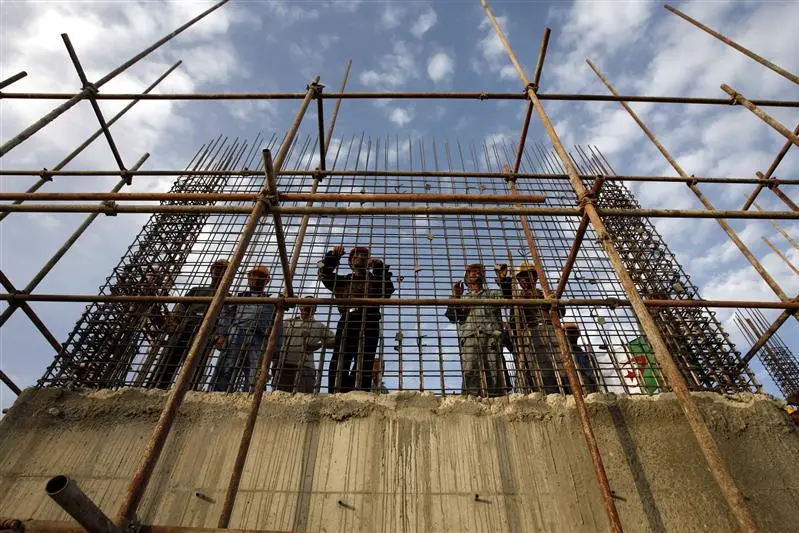PHOTO
Increased investments and a targeted approach to joining up Oman's logistics chain will boost the sultanate's capacity to move its domestic and export cargoes, as well as strengthen its credentials as a major freight trans-shipment hub.
Oman's newly released blueprint for the logistics industry, the Sultanate of Oman Logistics Strategy (SOLS) 2040, outlines plans to improve the country's soft infrastructure - in particular the regulatory environment, support mechanisms and institutions - in addition to maintaining the country's commitment to investment in hard infrastructure like roads, rail lines and ports.
Comparative advantage
Key to the strategy is Oman's location at the head of the Indian Ocean. In addition to sharing land borders with other major economies in the region, which allows it to serve as a gateway to the GCC region, Oman is also well placed to capitalise on anticipated growth in Iran and act as a redistribution point for east and central Africa.
Thanks to investment in transport infrastructure, the deepwater ports at Salalah, Sohar and Duqm and their accompanying free zones are well positioned to serve these markets. Recent investments in aviation links should also facilitate trade, with the new Salalah Airport now operational and the revamped Muscat International Airport scheduled to open next year.
According to SOLS, cargo routed through Oman's ports to the rest of the GCC could benefit from significant time and cost savings, eliminating the need for multiple trans-shipments. The sultanate's logistics strategy targets improvements in handling shipments, with a particular focus on efficiency and cost.
Terminals in Oman could offer an attractive alterative to more costly ports of call in the Gulf, saving time and fuel, and providing access to other modes of transport.
On the back of the new plan, Oman is aiming to more than double employment in the logistics sector to 80,000 jobs by the end of the decade, rising to 300,000 by 2040. The industry's contribution to the economy is targeted to double to OR3bn ($7.8bn) by 2020, reaching OR14bn ($36.4bn) in the next 25 years.
Clear picture for stakeholdersThe new strategy will be a game changer for the logistics industry, according to Reggy Vermeulen, CEO of the Port of Duqm on Oman's eastern seaboard. "Before we all talked about integration, but there is only so much we can do as commercial entities," Vermeulen told OBG. "Now that the ministry has put together a committee and formulated a proper plan, we can adjust accordingly."
With plans to develop Oman's railway network and special economic zones progressing rapidly, the Duqm port authority will be able to adapt its existing plans for the ongoing port construction and infrastructure build out to better fit the strategy, he said.
When all the linking parts of the logistics chain are in place, exports of bulk cargoes will rise considerably, according to Oman Rail data. In particular, mineral shipments are forecast to increase 10-fold once the fully integrated rail network is linked up to the country's three ports.
The bulk mineral export capacity of the port of Salalah, currently 10m tonnes a year, will be lifted to between 50m and 60m tonnes, with a significant increase for Duqm and Sohar as well, Oman Rail's chief commercial officer John Lesniewski told local media in mid-May.
Fast-tracking developmentTo meet the goals set out in SOLS, the pace of project development is being stepped up. In late May Oman Rail called tenders for the construction of three more segments of the national rail network, with the contracts covering more than 1200 km of track, alongside the required tunnels and stabilisation work. The three segments are crucial to the sultanate's logistics ambitions, linking Hafeet on Oman's border with the UAE all the way down to Salalah, via Haima and Duqm.
The new projects represent more than half of the total 2100 km of the planned rail grid. The contract for the first segment of the network, the 207-km stretch from the port of Sohar to Buraimi on the border with the UAE, is expected to be announced in the third quarter of this year.
Another important facet of the overall transport plan is the South Al Batinah Logistics Area, a transport and logistics hub being developed on an initial 30-ha site at Barka, situated close to the capital Muscat. The area will be developed as a dry port, linked by road and rail to coastal centres, and act as a trans-shipment, warehousing and distribution hub. In early June, officials of the Oman Logistics Company announced nine domestic and international firms had applied to pre-qualify for the operation and management contract for the facility.
© Oxford Business Group 2015












